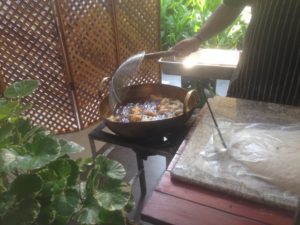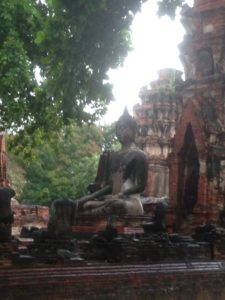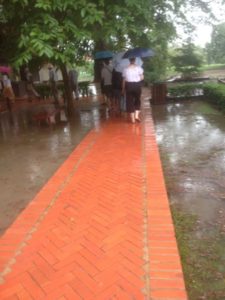We began our morning with a breakfast offering Thai coffee (made with sweetened condensed milk and strong drip coffee) and Thai doughnuts freshly fried for us and served with egg custard colored green by pandas leaves.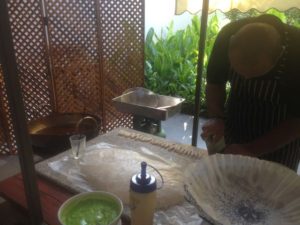
On our drive we stopped at a stand that sold many flavors of sticky rice cooked in bamboo. There were at least 6 flavors ranging from coconut to pumpkin to black sticky rice, all very sweet (very much like a sweeter rice pudding). 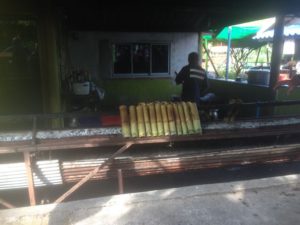 They cook the rice over a fire for an hour and a half, and they cut the bamboo open for you to eat the sticky rice.
They cook the rice over a fire for an hour and a half, and they cut the bamboo open for you to eat the sticky rice.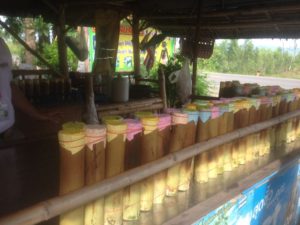
For lunch we stopped at a restaurant that had cannonball trees in the courtyard (reminiscent of my childhood in Puerto Rico),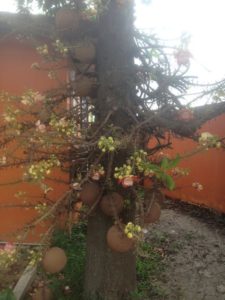 and served a buffet in clay pots. Afterwards, we fed the koi in the pond that surrounded the restaurant.
and served a buffet in clay pots. Afterwards, we fed the koi in the pond that surrounded the restaurant.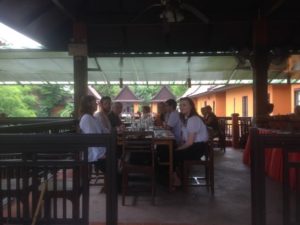
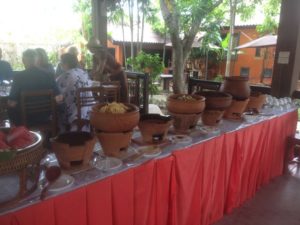
On our way to the Summer Palace, the sky opened up in our first rain yet, and although it stopped by the time we got off the bus, the sky was threatening and lightening kept crossing the sky. 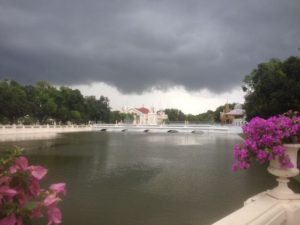 The Summer Palace was originally built in 1632 but was developed by King Rama V, (the small boy in the King and I) after his visit to England. The Summer Palace covers 50 acres of gardens, lakes, and buildings in an assortment of styles from English to French to Chinese to Thai.
The Summer Palace was originally built in 1632 but was developed by King Rama V, (the small boy in the King and I) after his visit to England. The Summer Palace covers 50 acres of gardens, lakes, and buildings in an assortment of styles from English to French to Chinese to Thai.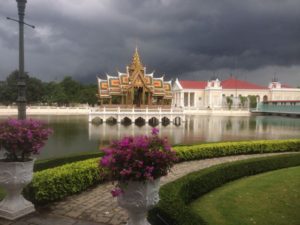
Chai Wattanaram Temple
Built outside of the island of Ayutthaya on the west bank of the Chao Phraya River in 1630 by King Prasat Thong in the Khmer style, this temple was not burned by the Burmese and still has its wooden roofs, although like most of the temples, it was looted and the heads of the many Buddhas that line its walls were cut off by looters who believed gold was hidden inside the Buddhas. 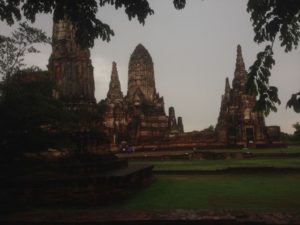
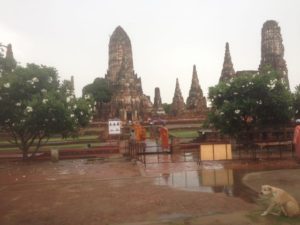
After the rainstorm, many of the paths were flooded, which cut down on the crowds, but still there were a number of Thai women dressed in traditional costume who had come to have their pictures taken because of a Thai soap opera that has a modern woman time-travel back to the 14th century.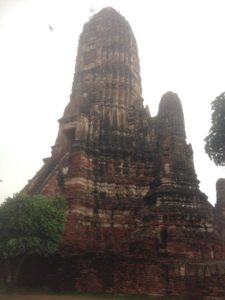
The site was extraordinary because it is fairly well preserved and because of its location along the river and across from the Queen’s Palace, built by the current king for his mother.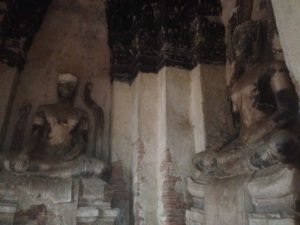
Flooding is a major problem, and they have constructed protective walls to be raised in the rainy season.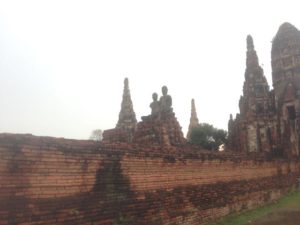
Ayutthaya
Founded in 1350, Ayutthaya was the second Siamese/Thai capital after Sukhothai. It was built on an island surrounded by three rivers, which helped with its defense, but it was burned by the Burmese in the 1767.
It flourished from the 14th to the 18th centuries, during which time it grew to be one of the world’s largest centers of government and commerce. It was once the largest city in Southeast Asia. A Chinese traveler reported that Ayutthaya had a million residents. After it was destroyed, the city was never rebuilt and remains an extensive archaeological site.
The next site we visited was Wat Mahethat, an extensive site best known for its head of Buddha surrounded by a banyan tree. 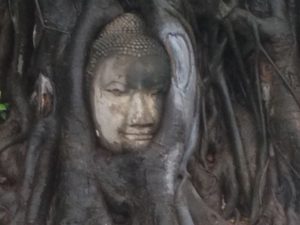 This site is much larger than the first but more damaged by time and flooding.
This site is much larger than the first but more damaged by time and flooding.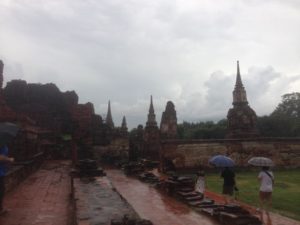
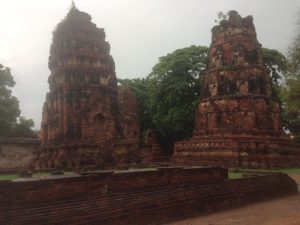
Today, the ruins are a UNESCO World Heritage Site surrounded by a large and bustling city. After a brief but intense rain showers, the grounds were flooded, and we were able to walk through them only because of a newly constructed brick walkway that kept us above the water.
.




